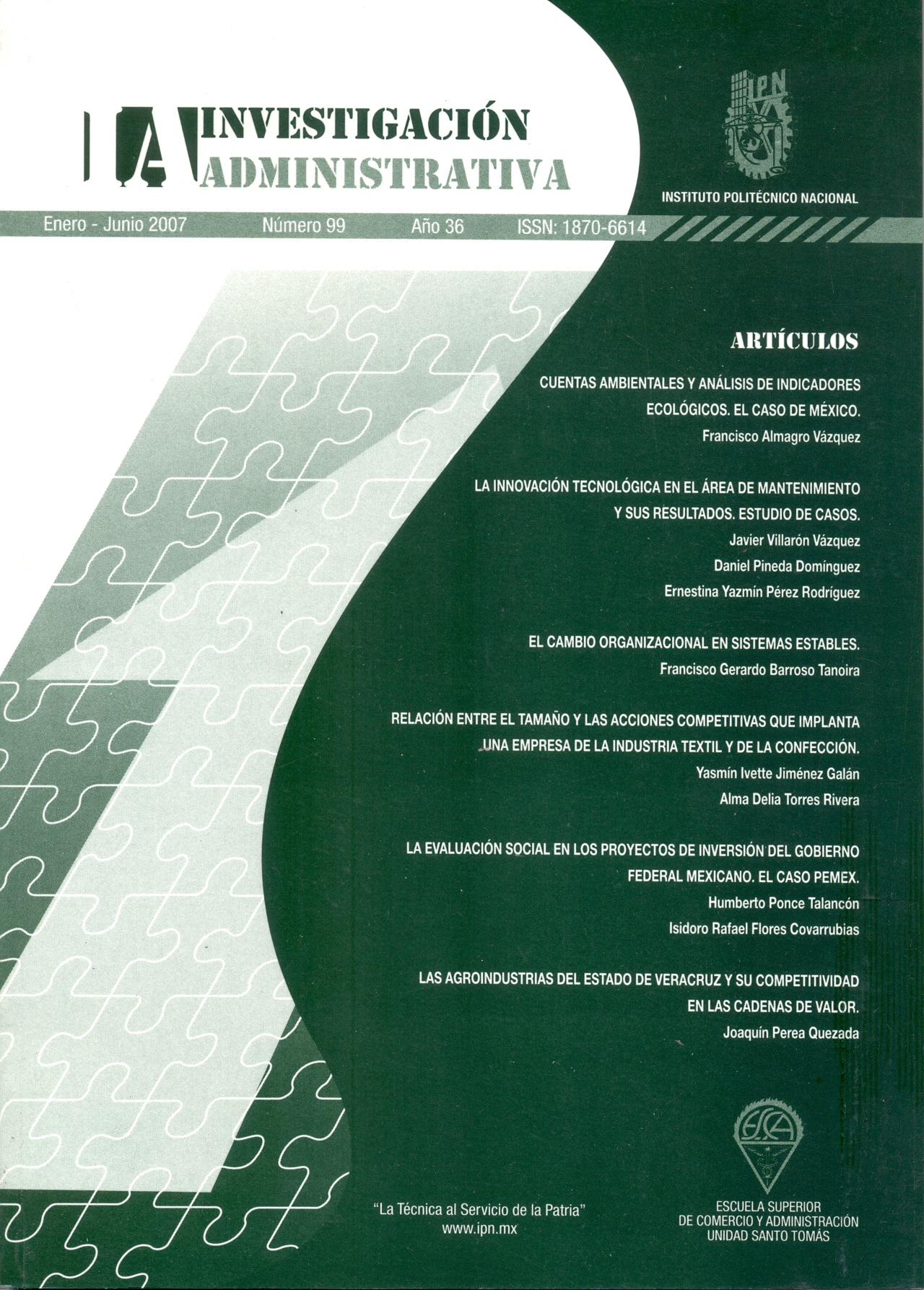ORGANIZATIONAL CHANGE IN STABLE SYSTEMS
Main Article Content
Abstract
The organizations which will survive and develop are those which better adapt to the environment, that is, those which best manage their strategies of change. However, it is frequently heard that there are enterprises in which failing actions for change were implemented and led the organization to instability. On the other hand, there are other interventions based in a negotiated change process, achieving better results.
The present essay analyses the concepts of variability and stable systems, identifying the factors which most influence change, and suggests actions for improving the development of organizations without altering stability, that is to say, achieving better results without losing statistical control.
The results showed that the factors which have most influence in the change process are the need for change, the need for not changing and the influence of barriers to change. Besides, for achieving change it is necessary to stimulate the need for it through a negotiated process to overcome the need for not changing. The influence of barriers to change must be diminished as much as possible because they can not be totally eliminated.
Article Details

This work is licensed under a Creative Commons Attribution-NonCommercial 4.0 International License.
References
Aguayo, R. (1990). Dr. Deming. The American who taught the Japanese about quality [Dr. Deming. El estadounidense que enseñó a los japoneses acerca de la calidad]. Nueva York, E.U.A.: Simon and Schuster.
Barroso, F. (2006, mayo). La creatividad en las empresas: percepción y sugerencias para su aprovechamiento. Ponencia presentada en el X Congreso Anual de Investigación en Ciencias Administrativas (ACACIA). Universidad Autónoma de San Luis Potosí.
Bertalanffy, L. (ed. 1998). Teoría general de los sistemas. México: Fondo de Cultura Económica.
Boje, D. y Rosile, G. (2003). Comparison of socio-economic and other transorganizational development methods. Jour nal of Organizational Change Management. Vol 16, No.1.
Daft, R. (2005). Teoría y diseño organizacional. México: Thomson.
Hellriegel, D., Slocum, J. y Woodman, R. (2004). Comportamiento organizacional (10a. ed.). México: Thomson.
Hernández, R., Fernádez, C., Baptista, P. (2003). Metodología de la investigación (3ª. ed.). México: Mc. Graw Hill.
Kaplan, R. y Norton, D. (1997). Cuadro de Mando Integral (The Balanced Scorecard). Barcelona, España: Ediciones Gestión 2000.
Litterer, J. (1979). Análisis de las organizaciones. México: Limusa.
Nadler, D. y Tushman, M. (1999). El diseño de la organización como arma competitiva. El poder de la arquitectura organizacional. México: Oxford University Press.
Robbins, S. (2004). Comportamiento organizacional (10ª. ed.). México: Pearson Educación.
Scherkenbach, W. (1994). La ruta Deming. Hacia la mejora continua. México: CECSA.
Savall, H. (2003). An updated presentation of the socio-economic management model. Jour nal of Organizational Change Management. Vol. 16, No. 1.
Savall, H. y Zardet, V. (1995). Ingénierie strategique du Roseau [Ingeniería estratégica del Junco]. Paris, Francia: Ed. Económica.
Senge, P. (1995). La Quinta Disciplina. El arte y la práctica de la organización abierta al aprendizaje. Barcelona, España: Granica.

